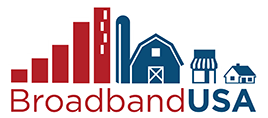NTIA defines Digital Inclusion as individual- and community-level access to robust broadband connections; Internet-enabled devices that meet their needs; and the skills to explore, create and collaborate in the digital world. BroadbandUSA evaluates digital inclusion through access, digital literacy, meaningful use, and institutionalization.
-
Access considers the availability of high-speed, reliable Internet and related equipment, including having Internet connections and technology at home or in community institutions (e.g., free public Wi-Fi, public computer centers).
-
Digital Literacy measures an individual’s ability to use the Internet and modern technologies, such as computers and smart phones.
-
Meaningful Use refers to how an individual uses their digital literacy skills to enhance educational and employment opportunities.
-
Institutionalization assesses a community’s efforts to incorporate digital skills and opportunity in its workforce development, economic development, or community planning strategies.
